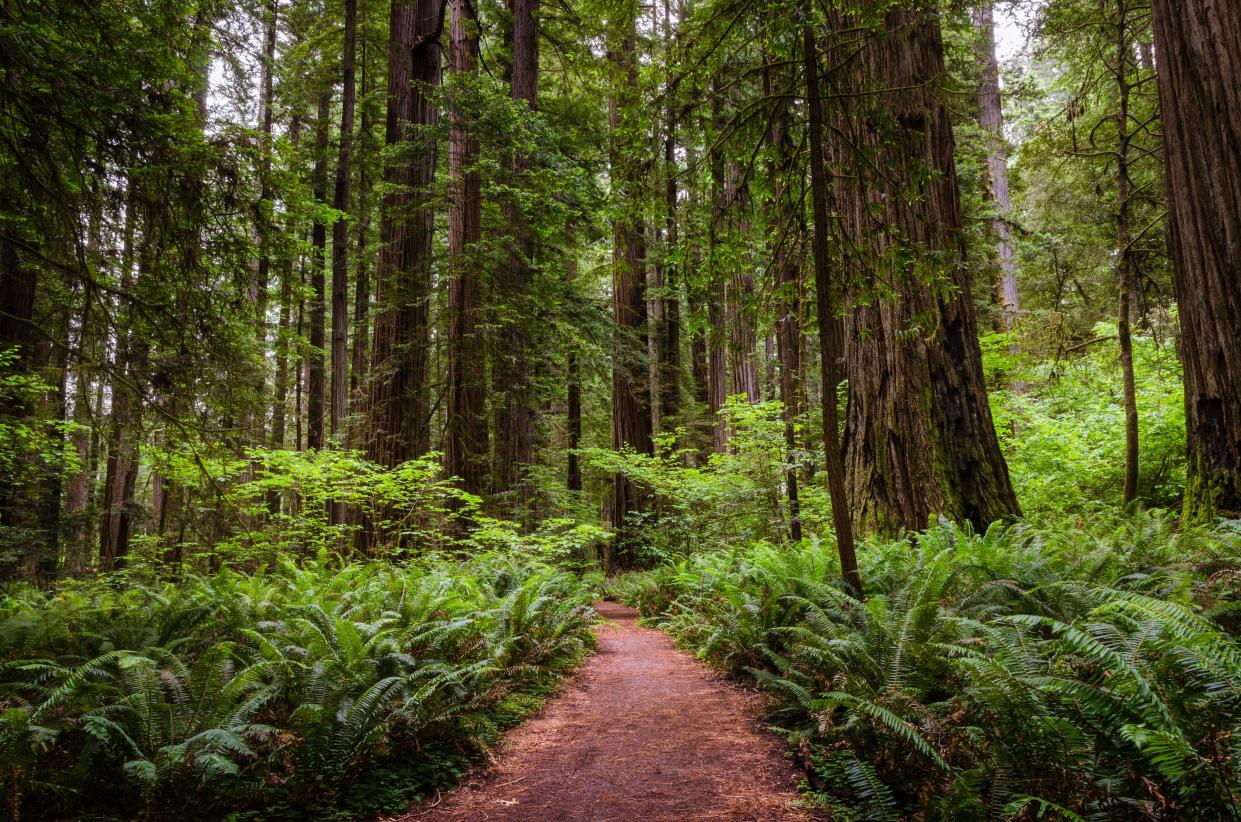Where do people stay when they go to Yellowstone, Grand Canyon and Yosemite national parks?
Travelers don't have to rough it staying at national parks, unless they want to.
When Vince Chi visited Yellowstone National Park in summer 2019, he spent two nights in a cabin and one night in a conical tent. While the cabin was more comfortable, he said the tent felt closer to nature, providing a more unusual experience.
“It did rain, and (the tent) didn't keep out all the water,” he said. “I would consider that closer to traditional camping than the cabin.”
National park visitors can choose from a wide range of lodgings, from simple and luxury tents to cabins and trailers. While some options provide more comfort, others are less expensive and may offer more adventure.
Here's a look at lodging options at three of America's most popular parks.
Family vacations are expensive: Here's how much you can expect to pay at popular destinations
Cruises are a cheaper way to travel: Here's what to know, when to book
Yellowstone National Park
Under Canvas offers upscale tents near Yellowstone and Grand Canyon, among other locations, and the company hopes to combine nature with comfort, said Chief Marketing Officer May Lilley. Some of these tents have private bathrooms and heating sources, and visitors can enjoy meals or alcoholic drinks, she added.
“Most of our guests are there because they want either amazing night skies to stargaze, or to wake up and hear chirping birds,” Lilley said. “That really kind of gives you a sense of place.”
The tents start at approximately $200 per night, comparable to the price of nearby motels and inns. Larger parties may consider renting small houses on Airbnb and Vrbo, which might be less expensive per person.
Travelers who don't mind simple tents can set up their own in park campgrounds for around $30 per night. Reservations are required.
Airfares for less than $300: 'Start monitoring those prices now' for holiday travel

Grand Canyon National Park
Ben Cox from Missouri visited the Grand Canyon with his family and stayed in a travel trailer pulled behind their truck. Because his parents are both teachers, his family wanted to travel for longer periods of time inexpensively.
“Me and my brother had bunk beds, and then my parents had a bed. It's pretty tight, but manageable. It has a bathroom and a small kitchen and stuff. And then it's nice because you don't have to move all your stuff like a hotel,” Cox said. “It's nice traveling by car instead of flying, and seeing stuff along the way.”
Trailer Village near Grand Canyon's South Rim can accommodate trailers. Visitors can make reservations online starting at $64 per night. The National Park Service also operates two campgrounds with sites at $18 nightly.
Visitors who don’t own trailers or live too far from a park entrance can consider staying in yurts or cabins available on various house rental websites, usually ranging from $50 to $100 per person per night.
Story continues below.
Yosemite National Park
AutoCamp Yosemite offers Airstream suites, luxury tents and cabins, which can sleep 2-5 people, depending on the lodging, according to Chief Marketing Officer Julie Saunders.
“By removing the apprehension around having to do all of the planning for an outdoor experience, outdoor lodging brands like AutoCamp have helped lower the barrier to entry for populations who may have never considered an outdoor trip before,” Saunders said.
Larger groups might find cabins and small houses to be more comfortable and provide more privacy, and various options could be found on house rental websites.
Xinle Hou visited Yosemite with seven friends in November 2019. She said they stayed in small houses near and inside the park rather than hotels because they played games late at night and didn’t want to upset neighbors.
“I think the reason why we chose there over hotels is basically because there were too many people,” Hou said. “We were trying to rent a place entirely to ourselves.”
This article originally appeared on USA TODAY: National parks visitors can choose from tents, cabins and trailers